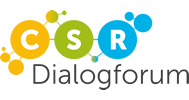The European Packaging Regulation (PPWR) – a new legal framework between innovations for the circular economy and bureaucracy and unrealistic targets
The PPWR came into force on 11.02.2025 – the publication in the Official Gazette took place on 22.06.2025 – the first provisions will take effect on 12.08.2026.
It is a directly effective EU regulation and therefore replaces the previous Packaging Directive, which led to divergent and inhomogeneous implementations in the individual member states. Different labelling requirements for packaging (e.g. in France) as well as non-identical approaches to regulating extended producer responsibility fees led to legal uncertainty, resulting in lower investments in innovative and environmentally friendly packaging and circular models.
This legal act is by no means simple and manageable for the relevant public until 2030 – after all, 29 accompanying acts still have to be issued.
In principle, the new EU-wide uniform legal framework pursues the following objectives:
Sustainability requirements
Minimization of packaging:
Producers are only allowed to place packaging on the market that meets the sustainability requirements of Art 5 to 12. According to these provisions, there are certain substance restrictions in packaging production, and the recyclability requirements for all packaging must be met by 2030 (staggered in time). Mandatory minimum recycled content in plastic packaging, minimization of packaging and the associated waste, and the improvement of the reusability of packaging are also standardized. There are also regulations on the future use of bio-based raw materials in plastic packaging and compostable packaging.
The principles of “Reduce, Reuse, Recycle” can therefore be found in the sustainability requirements. These principles will lead to a change in the packaging landscape – from a reduction of material composites to mono-material structures – paper packaging will play an increasingly important role.
This is against the background that it has not yet been clarified where the necessary recyclates for food approval will come from in the future. After all, to date, the majority of recyclates come from mechanical recycling, for which no food approval has yet been obtained. Among other things, the mandatory use of recyclates from 2030 will be 30% for PET, 35% for other non-contact-sensitive plastic packaging, and 10% for other contact-sensitive packaging – with the exception of PET.
Extended producer responsibility (EPR) will be significantly expanded: In future, manufacturers will be obliged to ensure financing, take-back and recycling of their packaging.
Declaration of Conformity for Packaging:
The obligations of producers to place packaging on the market described above must be documented in a declaration of conformity. Before the market is placed on the market, conformity assessment procedures must be carried out by producers and technical documentation must be drawn up, as set out in Annex VII. To do this, packaging must bear an identification number or other identification features. The declarations of conformity are an important milestone, as they are already to be applied from 12.08.2026 – as the first part of the new registration obligation. The obligation to prepare declarations of conformity is linked to a comprehensive reporting obligation, which, in addition to the preparation of the declarations of conformity, is also perceived as a bureaucratic and cost-intensive burden. This provision is also subject to criticism, as it cannot be ruled out that sensitive business data will be disclosed for this purpose.
There are no exceptions for small and medium-sized enterprises – all companies will have to use recyclable packaging in the future and will be obliged to have PPWR declarations of conformity for the packaging used from 2026. Certainly, this is a bureaucratic and cost-intensive burden, which means that it remains to be seen whether it will really create impulses for more circular economy and resource conservation.
Reduction targets for packaging waste:
Finally, a critical look at the reduction targets for packaging waste.
The PPWR aims to reduce per capita waste (of all packaging compared to the per capita packaging waste reported for 2018) by 5% by 2030, by 10% by 2035 and by 15% by 2040.
This ambitious goal is to be countered by the provision of § 14a AWG – according to which a 20% reduction in the number of single-use plastic packaging placed on the market should have been achieved by 2025 compared to 2018. The fact is that this goal will not be achieved in the near future. Critics claim that this is an exaggerated reduction target of the PPWR that will not be achieved even by ambitious reusable quotas.
The complete text of the EU regulation can be found at: https://eur-lex.europa.eu/legal-content/EN/TXT/PDF/?uri=OJ:L_202500040
Author: Mag. Elisabeth Moser-Marzi

